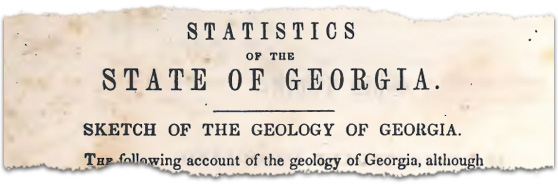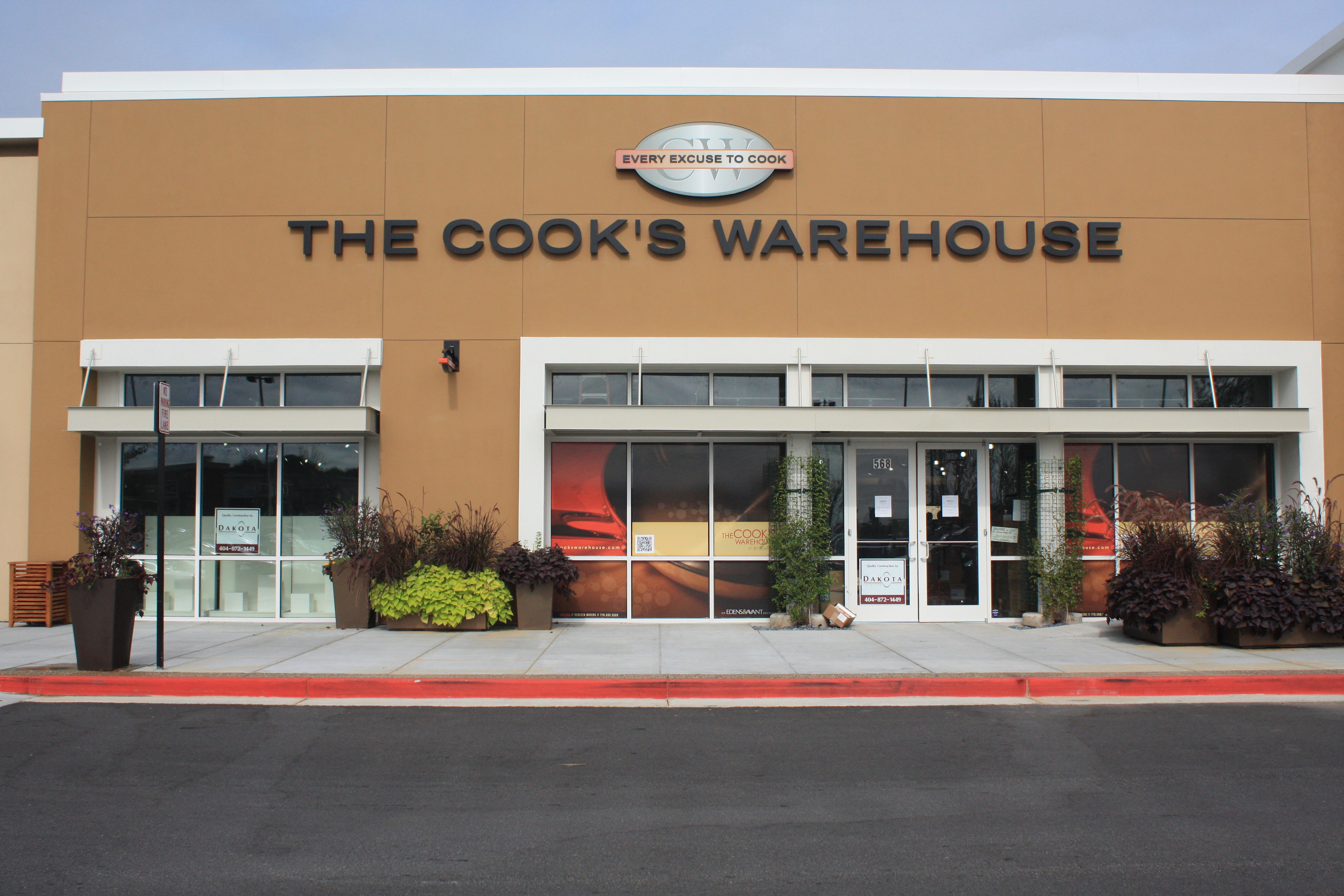Step back in time find out what it was like to live in Marietta, Georgia in 1849. This information about the City of Marietta and Cobb County was published 12 years before the Civil War. When this was written, the population of Cobb County was more than 4 times larger than the population of Atlanta, and just two years prior to the publication of this book, Atlanta was known as the City of Marthasville.
(Please visit our About Marietta page if you are looking for more current statistics)

Excerpts from:
Statistics
of the
State of Georgia
Published by George White in 1849

COBB.
BOUNDARIES. – This county is bounded north by Cherokee and Cass, east by Forsyth and De Kalb, south by Campbell and a small portion of De Kalb, and west by Paulding.
Laid out from Cherokee, and organized in 1832.
RIVERS, CREEKS
The Chattahoochee is the main stream. The creeks are Sweet Water, Powder Spring, Pumpkin Vine, Nickajack, Olleys, Noses, Proctors, Allatoona, Vickery, Rotten Wood, Noonday, Reubs, Wylleo, Soap, and Mud.
POST OFFICES
Marietta, Powder Springs, Acworth, Golgotha (the area west of Kennesaw Mountain and north of Lost Mountain), High Bridge (unknown where this was), Lebanon (the area just northeast of Roswell), Mill Grove (now the Mableton area), and Roswell.
POPULATION, TAXES, REPRESENTATION
The population is increasing. The census of 1845 gave to Cobb 10,518 inhabitants, of which 1,474 were slaves. Amount of State tax for 1848, 82,691 61. Sends two representatives to the Legislature.
TOWNS
Marietta is the seat of justice, and-one among the most pleasant towns in Cherokee Georgia. It is situated on the highest-point between the Atlantic ocean and Tennessee river, being 1132 feet above the level of the former. It was incorporated and made the county seat in 1814. Distance from Milledgeville 113 miles northwest, from Augusta 190 miles, from Atlanta 20 by the railroad, from Dalton 80, from Cumming 35, from Canton 22, The first house was built by James Anderson, Esq.
There are four churches—Episcopal, Methodist, Presbyterian, and Baptist; several schools, hotels, stores, &c. Population, 1,500. Does considerable business, being the market for Cobb, Cherokee, part of Lumpkin, Forsyth, Gilmer, Paulding, and Carroll counties.
The town is rapidly improving. Since the 1st of May, 1848, more than 60 houses have been built. Many persons from the low country of Georgia and South Carolina have recently re-moved here. The climate arid water will compare with any in the world. Provisions are cheap. Marietta, from the advantages it possesses in point of situation, accessibility, climate, and water, is destined to be one among the most attractive places in our State.
Acworth is a small village on the Western and Atlantic Railroad, twelve miles. N. W. of Marietta, in the midst of a thickly settled country. Population about 50.
Powder Springs, twelve miles S. W. of Marietta, on the road to Villa Rica, in Carroll, has two churches, Methodist and Baptist, and one school. Population 200.
Roswell, a pretty village, so called from Roswell King, Esq., situated 13 miles from Marietta and one mile from the Chattahoochee. Settled by persons chiefly from the seaboard of Georgia and South Carolina, and is the seat of an extensive cotton factory, it has one store, one church, one male and female academy, &c.
FACE OF THE COUNTRY, NATURE OF THE SOIL, VALUE OF LAND.
The surface of the country is broken. The lands’upon the Chattahoochee are rich, and will produce 800 pounds of cotton per acre, 8 barrels of corn, and from 20 to 30 bushels of wheat.
The creek bottoms are also fertile, and well adapted to cotton, wheat, and corn.
The uplands are of a mulatto and gray colour, will produce 600 pounds of cotton per acre, 5 barrels of corn, and about 15 bushels of wheat.
Best Chattahoochee lands are worth $20 per acre ; creek bottoms, $8 ; uplands, from $1 to $8 per acre.
AVERAGE PRODUCT PER ACRE
Corn 5 barrels, wheat 6 bushels, rye 5 bushels, cotton 500 pounds.
MARKETS
Marietta, Macon, and Augusta.
MANUFACTURES, MILLS, DISTILLERIES
Roswell factory, at Roswell, on Vickery’s creek, incorporated in 1840. Capital $80,000.
|
Spindles
|
3,500
|
|
Looms
|
40
|
|
Operatives, nearly all whites
|
150
|
|
Bales of cotton used per day
|
5
|
|
Yards of shirting made per day
|
1,100
|
|
Osnaburgs
|
1,500
|
|
Bundles of yarn made per week
|
1,200
|
|
Hours of work per day
|
11
|
|
 |
The water-power fine. Wages of operatives dependent upon their industry. The temperance principle strictly enforced. Provision made for the instruction of thè children. Goods manufactured have a high character, and are sent to Tennessee, Alabama, and to various parts of Georgia.
Nickajack factory, on Nickajack creek.
At Lebanon, the Roswell factory have an extensive merchant mill, capable of making from 1 to 300 barrels of flour per day. An extensive tannery, the property of Colonel Dunwoody, is located at this place. The leather made here is pronounced equal to any in the United States.
Grist-mills 21, saw-mills 21, besides several merchant mills on Soap creek. Seven miles east of Marietta is an extensive distillery, at, which are made 120 gallons of whiskey per day.
MOUNTAINS
Kenesaw Mountain, 2.5 miles from Marietta, is 1828 feet above the level of the ocean; so called from an Indian chief who was accidentally shot by a white man, whilst on a hunting excursion. The view from the top of the mountain is beautiful. Lost Mountain, Brushy Mountain, and Sweat Mountain, are considerable elevations.
MINERAL, SPRINGS
The Powder springs have acquired some celebrity, and will, in the course of time, attract the notice of persons seeking health and recreation. They are highly impregnated with sulphur and magnesia, and are efficacious in the cure of diseases, particularly those of a cutaneous character and dyspepsia.
MINERALS
Gold has been found on Proctor’s creek, in the northern part of the county. At Allatoona, on Powder Spring creek, on Sweet Water creek, near Kenesaw mountain, and in Marietta. Granite is abundant. Silver, iron, lead, copper, talc, soap-stone, plumbago, quartz, &c.
ROADS
The roads are as good as the nature of the country will allow. The principal road crosses the Chattahoochee at the Standing Peach-tree, passes through Marietta and Allatoona to Cassville. Another main road passes through Sand Town in Campbell county to Allatoona, and is known as the Alabama road. Another road much travelled, is the one which crosses the Chattahoochee river at McAfee’s bridge, and passes near Roswell to Vann’s valley, and North Alabama.
RELIGIOUS SECTS
The religious sects are Baptists, Missionary and Anti-Missionary, Presbyterians, Methodists, Episcopalians, and a few Universalists. There are about 20 churches in the county, and probably as many ministers.
EDUCATION
There are many respectable schools in various sections of the county, particularly at Marietta and Roswell.

CHARACTER OF THE PEOPLE
Considering the recent settlement of the county, the people generally may be said to be orderly and temperate. On public occasions irregularities are often committed, but upon the whole the population of Cobb will compare favourably with many of the older counties of the State. The tone of morals is improving every day.
AMUSEMENTS
These chiefly consist in hunting, dancing and visiting. Parties occasionally go to the Powder Springs, and the Kenesaw mountain. Soirées are quite common in Marietta.

CLIMATE
The climate, though variable, is as healthy as any portion of the United States. Exposure to the cold and rain is hardly ever attended by serious consequences. No case of consumption has ever occurred in the county. The summer diseases are bowel complaints, &c. The winter diseases are pleurisy and pneumonia.
INSTANCES OF LONGEVITY
Mr. Fleming is now living, over 94 years of age. Mr. J. Collins, a revolutionary soldier, over 88. Mrs. Henry is over 80. Mrs. Dougherty is 85. Mr. Smith is 80. Mr. Edwards died a few months ago, aged 90.
EARLY SETTLERS
Among the early settlers were the following:
Mr. James Anderson, Mr. Simpson, Mr. Massey, William Crane, William Morris, Tho. Whitehead, J. D. Mullins, James Mohon,. W. P. Maloney, James Powere, Edward Mays, Bradley Smith, and J. Collins:
INDIAN TOWNS
Sweet Water Town, once inhabited by Cherokees, is on Sweet Water creek, 14-miles north of Marietta. Kenesaw Town, on Noonday creek, five miles northwest of Marietta. Buffalo Fish Town, 16 miles southwest of Marietta.
ANTIQUITIES
On Mud creek there are the remains of an ancient fortification, and on the Chattahoochee several small mounds.
NAME
John Cobb emigrated from Virginia in 17—, and settled in Columbia county, where his son Thomas W. Cobb was born, in honour of whom this county was named. For some time he went to school to Dr. Waddel near Applington, and made considerable proficiency in the languages. He afterwards studied law in the office of the Hon. Wm. H. Crawford, and settled in Lexington. In a short period he attained to a degree of eminence in his profession which probably has been seldom surpassed by any lawyer in Georgia. He was elected to Congress in 1816, and in 1823, and in 1824 was elected senator, which office he resigned in 1828, and became a judge of the Superior Court for the Ocmulgee circuit. He died in 1830 at Greenesborough, where he had removed from Lexington. Mr. Cobb was deeply versed in the knowledge of the law, eloquent and argumentative. In his intercourse with men, he was sprightly and entertaining. He held religion in -the highest veneration, and his house was open to the ministers of the gospel.
Source: Google book search.
Bonus: A couple more scanned images from the book regarding nearby Atlanta and Stone Mountain.





















 While energy is high at Theatre in the Square with the excitement of celebrating the 30th Anniversary Season, reality has settled on the fact that the economy has taken its toll, leaving the theatre to ask for the support of the community or risk closing its doors forever.
While energy is high at Theatre in the Square with the excitement of celebrating the 30th Anniversary Season, reality has settled on the fact that the economy has taken its toll, leaving the theatre to ask for the support of the community or risk closing its doors forever. 









